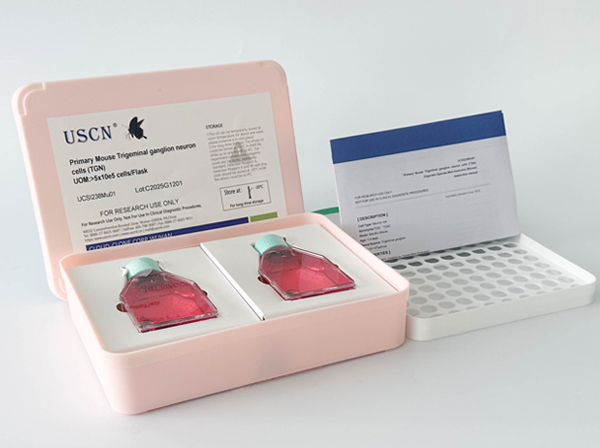Rat Model for Cerebral Hemorrhage (CH)
Hemorrhage, Intracerebral Hemorrhage
- Product No.UDSI836Ra01
- Organism SpeciesRattus norvegicus (Rat) Same name, Different species.
- Prototype SpeciesHuman
- SourceAutologous blood stereotaxic injection into the striate
- Model Animal StrainsSD Rats(SPF), healthy, male and female, body weight 250g~300g.
- Modeling GroupingRandomly divided into six group: Control group, Model group, Positive drug group and Test drug group.
- Modeling Period2~4 weeks
- Modeling MethodModeling: Firstly,narcotize rats at enterocoelia, then adjust stereotaxic apparatus to make the rat's incisors plane to be 2.4mm lower than the biauricular line plane. Secondarily, drill the skull with a 1mm engine bit in the front of the crown seam, 0.2mm and 3mm by the middle line, then insert microinjector vertically in brain for 5.5mm and fix it. Finally, take 100ul of tail blood and inject it into corpus striatum by a stereotaxic apparatus.
Drug intervention: 5min was established after the model was successfully established, and saline was injected into the lateral ventricle using a stereotaxis. The drug group was injected with 5min after the model was established, and the drug was injected into the lateral ventricle using the brain stereotaxis.
Brdu was injected intraperitoneally every day. Brdu was dissolved in 0.9% normal saline and 50mg/kg was injected into the abdominal cavity of rats.
Rats were evaluated by behavioral evaluation on 1d, 3d, 7d and 14d after the modeling. - ApplicationsDisease Model
- Download n/a
- UOM Each case
-
FOB
US$ 140
For more details, please contact local distributors!
Model Evaluation of the Rat Model for Cerebral Hemorrhage (CH)
Behavioral evaluation
The 24 scores of nerve function score were used to score the behavioral defects of the rats in each group.
The improved 24 - point neurologic score included 6 parts of the experiment, with a score of 0-4 in each part. 0= has no nerve function defect and the most serious nerve function defect of 4=.
The six parts of the experiment :
(1) the rats were placed on the open mesa to observe the balance of the limbs.
(2) the rats were placed on the open mesa to observe the gait of the rats.
(3) the rats were placed on the slope of 45 degrees to observe the climbing behavior of the rats on the slope.
(4) the rats were placed on the open table to observe whether the rats were turning around.
(5) the rat tail was suspended in the air to observe the movement of the forelimb and the balance of the strength of the limbs.
(6) the forelimb of the rat was placed on the open platform, and the rat tail was raised.
Pathological Results of the Rat Model for Cerebral Hemorrhage (CH)
Immunofluorescence:
After the behavioral evaluation, the rat was killed by heart perfusion, the brain tissue was collected, and the paraffin section was prepared.
Double staining of immunofluorescence:
nestein/NICD, Brdu/DCX, Brdu/Neun, DCX/NICD.
TUNEL:
TUNEL staining, to observe the cell apoptosis.
Cytokines Level of the Rat Model for Cerebral Hemorrhage (CH)
ELISA detection
1, 3d hematoma around the brain tissue, brain homogenate, collected supernatant, Elisa to detect the expression of TNF- alpha, IL-23, IL-1 beta and IL-6.
Statistical Analysis of the Rat Model for Cerebral Hemorrhage (CH)
SPSS software is used for statistical analysis, measurement data to mean ± standard deviation (x ±s), using t test and single factor analysis of variance for group comparison, P<0.05 indicates there was a significant difference, P<0.01 indicates there are very significant differences.
GIVEAWAYS
INCREMENT SERVICES
Tissue/Sections Customized Service
Serums Customized Service
Immunohistochemistry (IHC) Experiment Service
Small Animal In Vivo Imaging Experiment Service
Small Animal Micro CT Imaging Experiment Service
Small Animal MRI Imaging Experiment Service
Small Animal Ultrasound Imaging Experiment Service
Transmission Electron Microscopy (TEM) Experiment Service
Scanning Electron Microscope (SEM) Experiment Service
Learning and Memory Behavioral Experiment Service
Anxiety and Depression Behavioral Experiment Service
Drug Addiction Behavioral Experiment Service
Pain Behavioral Experiment Service
Neuropsychiatric Disorder Behavioral Experiment Service
Fatigue Behavioral Experiment Service
Nitric Oxide Assay Kit (A012)
Nitric Oxide Assay Kit (A013-2)
Total Anti-Oxidative Capability Assay Kit(A015-2)
Total Anti-Oxidative Capability Assay Kit (A015-1)
Superoxide Dismutase Assay Kit
Fructose Assay Kit (A085)
Citric Acid Assay Kit (A128 )
Catalase Assay Kit
Malondialdehyde Assay Kit
Glutathione S-Transferase Assay Kit
Microscale Reduced Glutathione assay kit
Glutathione Reductase Activity Coefficient Assay Kit
Angiotensin Converting Enzyme Kit
Glutathione Peroxidase (GSH-PX) Assay Kit
Cloud-Clone Multiplex assay kits
Related products
| Catalog No. | Organism species: Rattus norvegicus (Rat) | Applications (RESEARCH USE ONLY!) |
| UDSI836Ra01 | Rat Model for Cerebral Hemorrhage (CH) | Disease Model |



